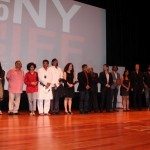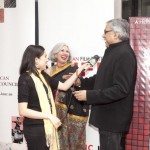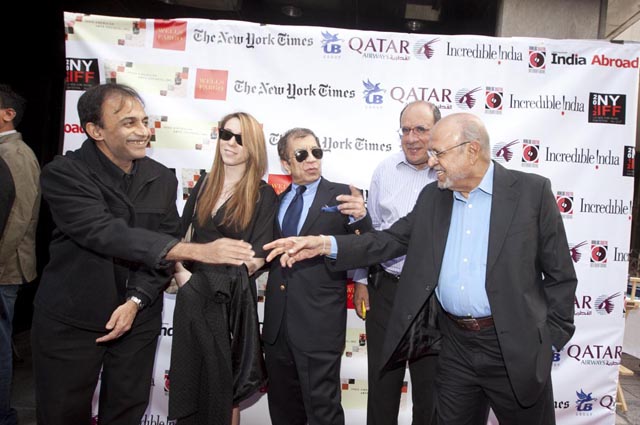
2012 NYIFF – Indian Mango in the Big Apple
The mix is indeed a compelling one: A Rabindranath Tagore tale by the iconic Rituparno Ghosh and – one-minute cell phone Bollywood films; Anurag Kashyap’s saga ‘The Gangs of Wasseypur’ which won acclaim at Cannes and – short films made by unknown students from Mira Nair’s Maisha Film Lab in Uganda.
Big and small, celebrities and novices, all blended in the New York Indian Film Festival, with over 44 independent films, documentaries and regional cinema, in a cacophony of languages, a celebration of the many avatars of Indian cinema.
Indeed, this year the Indian film industry marks its 100th year and if the pioneers had been around, they would have been quite pleased with the diversity at the NYIFF, which is in its 12th year and is the oldest Indian film festival in America. It is presented by the Indo-American Arts Council, (IAAC) headed by Aroon Shivdasani, the doyenne of the city’s South Asian cultural arts scene.
As Shivdasani points out, the festival was born right after 9/11 and was an attempt to bring diversity and the arts back to a devastated city, and the mandate has been to present cinema from the Indian sub-continent in all its in its many juxtapositions.
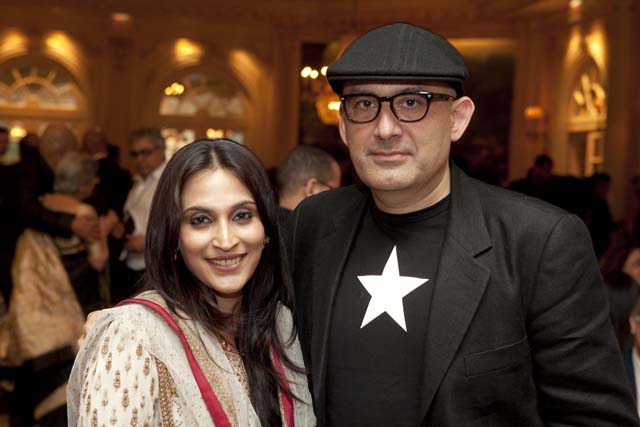
At NYIFF, A Place for Regional Cinema
Along with the Hindi films, there are Bengali, Marathi and Tamil films. This year the festival had several regional films including ‘Aadukalam’, ‘Chitrangada’, ‘Shala’, Aashpordha’, and ‘Abosheshey’. Interestingly, the Western audience has been growing. ” Film aficionados increasingly gravitate towards our festival films,” says Shivdasani. ” The audiences who view ‘foreign’ films are equally comfortable reading English subtitles on Indian films as they are reading subtitles on French or Italian films.”
Like any good movie, the five-day festival had lots of action, drama, side stories and even back stories. Aseem Chhabra, director of the film festival, reviewed over 250 films with his programming committee to come up with an eclectic mix which showcased the diversity of Indian cinema. There were panels, discussions, parties and after-parties, all a shorthand for absorbing the diverse material and networking with film buffs.
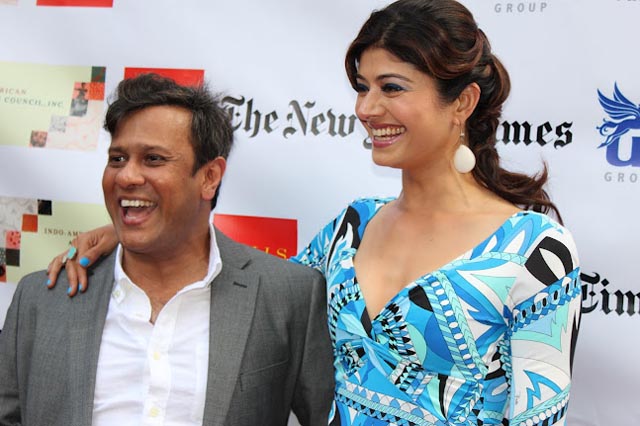
It was in many ways a New York story, with the opening day red carpet taking place outside the historic Paris Theater (a favorite of the late Ismail Merchant), right opposite the glitzy Plaza Hotel on Fifth Avenue. Horse carriages trotted by near Central Park, horns honked as cars sped and pedestrians rushed by in frentic NY fashion, a few stopping to see what the hullabaloo was about.
Celebrities, upcoming celebrities and not-yet-celebrities filled the red carpet, a showcasing of American Dreams. The star power included Shyam Benegal, Dev Benegal, Aishwariya Dhanush, Madhur Jaffrey, Suneil Anand, Bedabrata Pain, Sarita Choudhury, Samrat Chakrabarti, and Ajay Naidu. The opening night film was the very powerful ‘Chittagong’ by first time filmmaker Bedabrata Pain, a research scientist who left NASA to pursue filmmaking.
After the screening, the guests walked across to the Jemeriah Essex House Hotel facing Central Park. Over 250 guests attended the gala and actor-singer Devika Bhise gave a silky, smoky rendition of jazz favorites. It was an opportunity to rub shoulders with new and established filmmakers, to touch the silver screen.
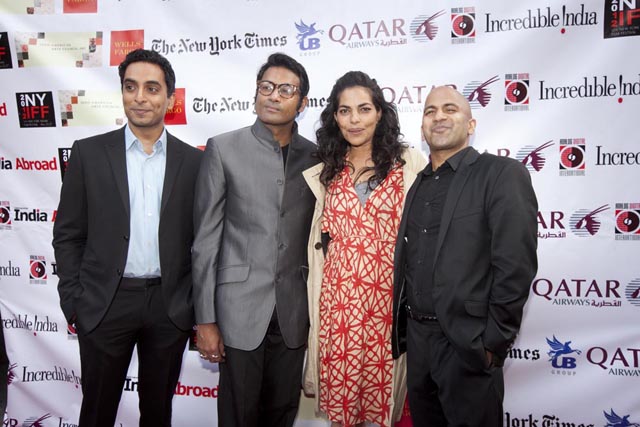
Rituparno Ghosh, Dev Anand and More…
The centerpiece film at the festival was ‘Chitrangada’ directed by Rituparno Ghosh and in which he acts as a choreographer planning to stage the dance drama on the occasion of Rabindranath Tagore’s 150th birth anniversary. Ghosh, who was unable to attend, received a Special Contribution to Indian Cinema award.
Other highlights of the festival included a Shyam Benegal retrospective of his trilogy ‘Mammo’, ‘Sardari Begum’ and ‘Zubeidaa’, and fans were delighted to see ‘Shyam Babu’ paid tribute with a Lifetime Achievement Award at the festival.
There was nostalgia too with a showing of the colorized version of the late Dev Anand’s ‘Hum Dono’ and his son Suneil Anand had flown in for the event. This screening brought back a longing for the evergreen star’s charisma and youthfulness, for a vanished time which many immigrants remember fondly.
Asked as to how his father would have liked to be remembered, Anand said, ” As a visionary, as a forward looking person – he was always ten steps ahead. He always was very cordial, warm hearted and a gentle soul. I’d like to say I had a great dad and I will always miss him. But he’s still here – and he will live forever.”
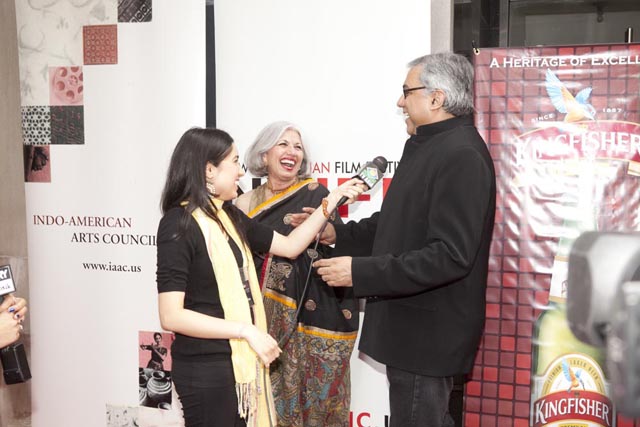
At NYIFF, Films, Filmmakers, Film Students and Fans
A well-known celebrity from the South, the beautiful Aishwariya Rajnikanth Dhanush was making her directorial debut at the festival with ‘3’. The daughter of Rajnikant and the wife of Dhanush, she is a talented classical dancer.
Asked as to how the dancer in her helped the filmmaker within her, she joked, ” Dancing to other’s tunes is OK but making others dance to my tune will be better! Every form of art is creation and coming from a family where I’ve seen the studios all my life, I feel more at home on the sets than at home. It feels right.”
Indeed, the festival had many first time filmmakers with unusual stories to tell. Perhaps the most outrageous is ‘Kumare’ directed by Indian-American filmmaker and self-proclaimed religious skeptic Vikram Gandhi. In the film, he transforms himself into an Indian guru – and actually finds disciples following him! This film won the Audience Award for best documentary at the 2011 SXSW Film Festival.
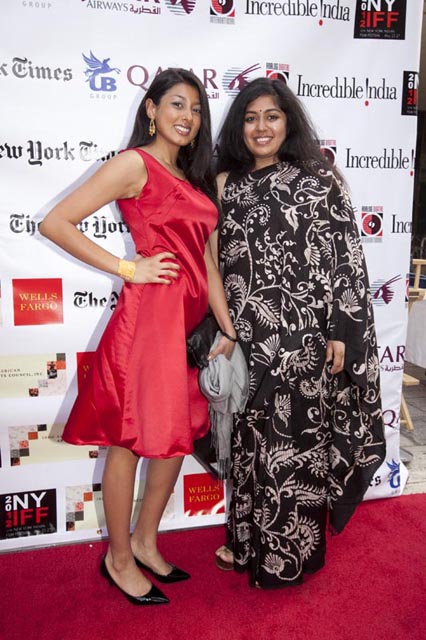
Indian-American Stories
One of the charms of this festival is the close-knit informal atmosphere where film students and emerging filmmakers get the opportunity to connect with established directors and actors. A novel feature is the one-minute cell phone films from the students of New York University, with the subject Mobile Bollywood Music Videos. Two young Indian-American filmmakers who showed their first time efforts at the festival were Vishesh Sharma with ‘The Color of Anger’ and Kabir Chopra’s ‘Strangers’.
The winners of the NYIFF 2012 Awards were announced on the closing day before the US premiere of Anurag Kashyap’s ‘Gangs of Wasseypur’ with the director flying in directly from Cannes where the film was shown to acclaim. The children’s film ‘Gattu’ won the Best Film Award, while Sujay Dhake won the best direction award for ‘Shala’,
A big crowd pleaser was ‘Dekh Indian Circus’ which got the Best Actor award for Nawazuddin Siddiqui, who has given amazing performances in several recent films, and the Best Actress Award went to Tannishtha Chatterjee. There were so many good performances by young actors in several films that a special Young Actor Award was added, going to Mohammad Samad for ‘Guttu’.
The festival had some thought-provoking documentaries and shorts including ‘Inshallah Football’, ‘Kumare’, ‘Big in Bollywood’ and ‘Transgenders: Pakistan’s Open Secret’ but the award went to the searing ‘Saving Face’ about acid violence victims in Pakistan, which had earlier won the Oscar for Daniel Junge and Sharmeen Obaid- Chinoy
Indian cinema has certainly moved in many directions and though there was no out and out Bollywood film at the festival, the influences are always there as an undercurrent, from the Bollywood obsessed gangsters in ‘The Gangs of Wasseypur’ to ‘Big in Bollywood’ the saga of Omi Vaidya, a struggling actor in LA who lands a job in the Bollywood film ‘3 Idiots’.
As Indians move globally they are bound to take their cinema with them, change it, transform it. One of the happy stories of the festival was that of Bornila Chatterjee, who was born in Los Angeles and grew up in Calcutta. She worked in theater in India and returned to the US, graduating from NYU’s Tisch School of the Arts. Her first feature film ‘Let’s be Out, the Sun is shining’ is a truly American story about finding oneself – and it ended up winning the Audience Choice Award at the festival.
So what constitutes an Indian film? As the world shrinks and becomes ever more a neighborhood with outposts in New Delhi and New York, the definition will be ever more porous and elastic – and film-goers will only be more enriched.
(C) Lavina Melwani
This article first appeared in The Hindu newspaper
2012 NYIFF – Snapshots of a Film Festival
Star power, top directors and upcoming ones, films that make you smile, films that make you cry, and films that make you think. The 12th New York Indian Film Festival was a potent mix. Here are some glimpses of Indian cinema in the city.








